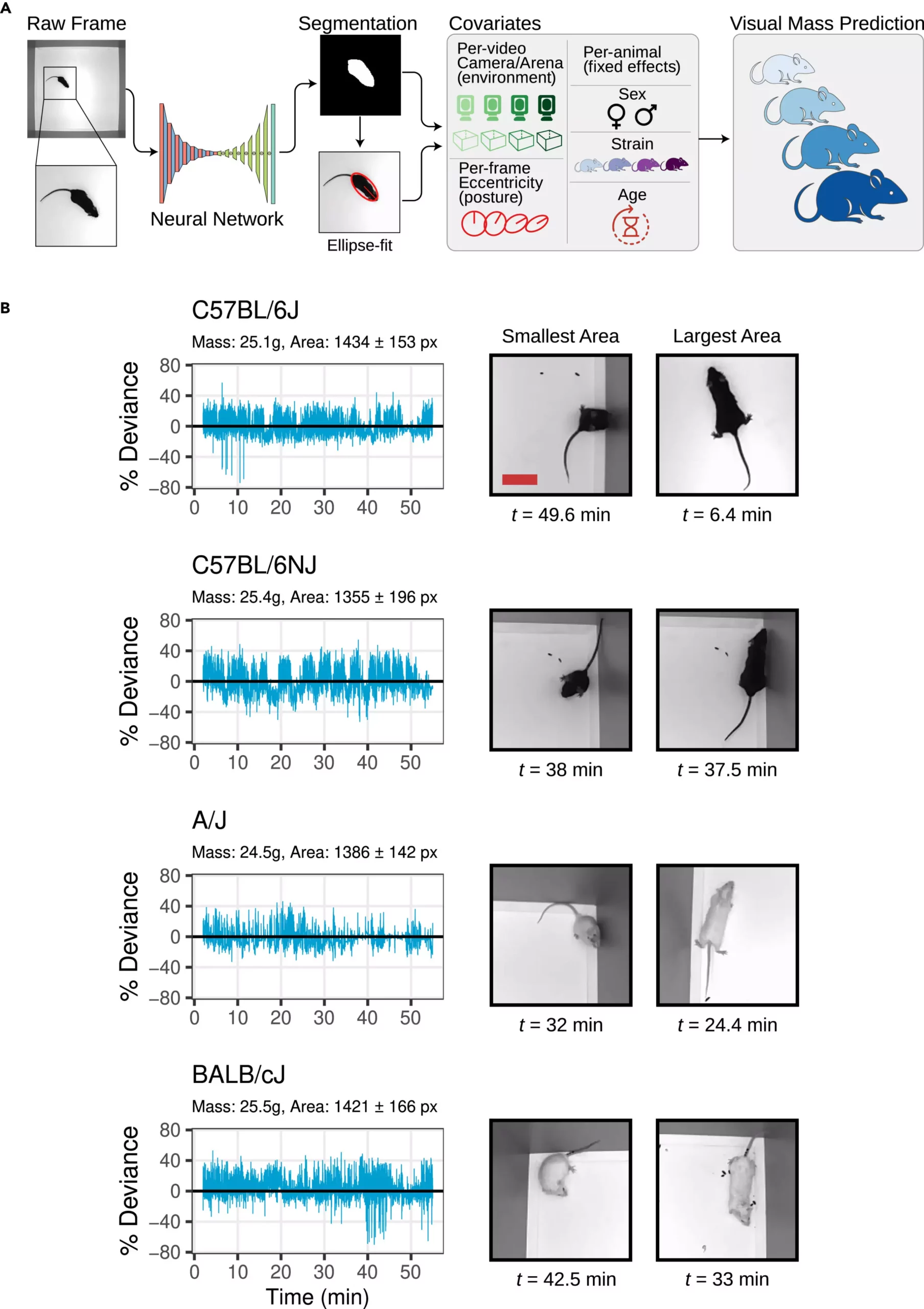

Biomedical research involving mice has long been hindered by the stress associated with traditional weighing techniques. However, a research team led by Jackson Laboratory (JAX) Associate Professor Vivek Kumar, Ph.D., has developed an innovative method to accurately and continuously measure mouse body mass using computer vision technology. This groundbreaking approach aims to improve the quality and reproducibility of research involving mice, ultimately advancing the field of biomedical science.
The research team faced numerous challenges in developing this non-intrusive body mass measurement method. Unlike static subjects used in industrial farming, mice are highly active and flexible creatures that frequently change posture and shape. Additionally, the team had to account for 62 different mouse strains, each with unique sizes, behaviors, and coat colors, requiring the use of multiple visual metrics, machine learning tools, and statistical modeling to achieve accurate results.
By analyzing a large mouse video dataset and leveraging computer vision technology, the research team was able to calculate body mass with less than 5% error. This method involved training models with genetically diverse mouse strains to handle the variable visual and size distributions commonly seen in laboratory settings. The team’s innovative approach not only reduces the stress on mice but also allows for the detection of small but significant changes in body mass over multiple days, making it ideal for studies involving drug or genetic manipulations.
The non-intrusive body mass measurement method offers several key advantages for researchers. It enables the continuous monitoring of body mass, allowing for the detection of subtle changes that could impact the outcome of experiments. Additionally, this method has the potential to serve as a diagnostic tool for general health monitoring and can be adapted to different experimental environments and other organisms in the future. Overall, this innovation promises to enhance the quality and reliability of a wide range of preclinical studies.
The development of a non-intrusive method for measuring mouse body mass using computer vision technology represents a significant advancement in biomedical research. By reducing stress on the animals and enabling continuous monitoring of body mass, this innovation has the potential to revolutionize the way research involving mice is conducted. With further refinement and adaptation to different experimental settings, this method could pave the way for more accurate and reproducible preclinical studies in the future.
In the realm of software development, the ability to swiftly and accurately address bugs is…
The realm of quantum computing and communication is not just an abstract dream anymore; it…
In a remarkable leap for the field of material science, a collaborative research initiative has…
Throughout Earth's vast history, our planet has endured five major mass extinction events that reshaped…
Rainfall is a vital element of our planet’s hydrological cycle, yet many aspects of its…
On a night when the universe aligns, a mesmerizing phenomenon awaits: the appearance of the…
This website uses cookies.